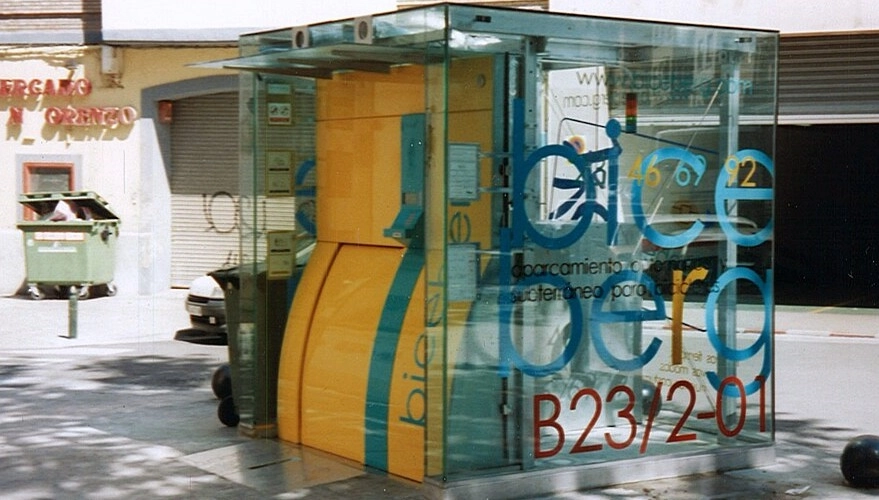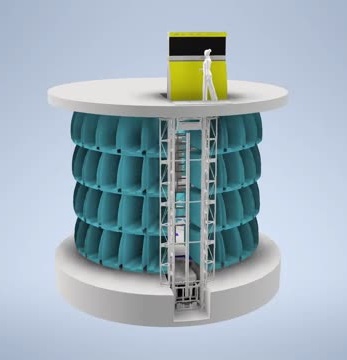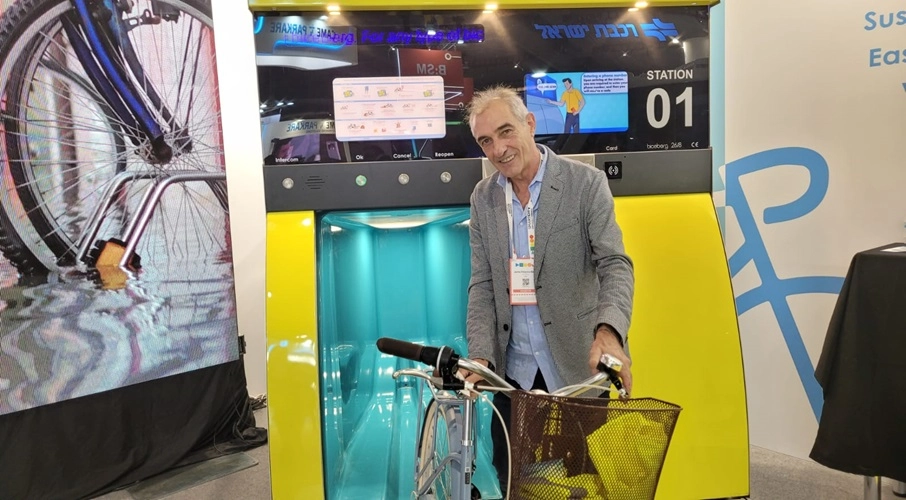During the Tomorrow.Mobility World Congress 2023 (TMWC2023), Jaime Palacios, CEO and founder of the company MA-Sistemas, discusses the advantages of the new parking system, Biceberg.
“It’s a container that allows the users to place any type of bicycle along with the accessories that they need to transport,” Palacios says in an interview with Mobility Portal Europe.
“The person simply places their vehicle on the loading dock, and we organize it inside,” he adds.
The company offers different options to address the various demands of users.
Thus, the Biceberg brand has three different types of the product: Biceberg Down for underground storage, Biceberg Up for elevated above ground level, and Bigloo, which is a container that is on the ground.


“Biceberg has multi-level storage that offers the possibility of increasing capacity both underground and above,” Palacios details when asked about the product’s capacity.
Recently, the company developed the world’s largest, with a capacity for 207 bicycles or scooters.
The Biceberg parking facilities that can store this record number of vehicles are two, both located in Israel, one in Tel Aviv and the other in Herzliya.
“Normally, we manufacture containers for 100 units because it provides more versatility,” highlights the founder of MA-Sistemas.
Regarding the minimum capacity offered by the company, this is 23 vehicles.
The company also offers charging options in its system, which is implemented through Schuko type 230v chargers.
“We standardize the charging system, which is the most convenient,” says the CEO.
It is worth mentioning that these systems are already operational at various points in Europe and Asia. For example, they have installations in Spain, Switzerland, Poland, Singapore, and Israel.
“We have projects open worldwide because there is no other company offering the same product,” says Palacios.
As for the business model, Biceberg works with local partners.
This allows them to overcome communication barriers that language incompatibility may generate, as well as ensure a more detailed knowledge of the area and its context.
What are the benefits of Biceberg?
The development of Biceberg has allowed solving a variety of issues with a single solution.
“The machinery was created to promote the use of micromobility vehicles, satisfying existing users, but also generating new ones,” says the CEO.
The fact is that these cells offer a “safe place” in cities where users can park their bicycles and scooters without risks.
“In Israel, we prevent people from bringing vehicles into the train cars, thus solving an intermodal problem,” declares Palacios, referring to the lack of space in this mode of transportation.
“A train car costs a million euros, but with Biceberg, they can solve the issue for much less money,” he adds.
It is worth noting that what sets the cells of this company apart from other systems is that they are more automated.
“There is a Japanese patent that does not allow loading extra items to vehicles because it can mean the shutdown of the entire parking. They have many prohibitions,” says the CEO.
“The philosophy of our company is ‘think about the user’. This is our contribution to smart cities,” he concludes.
Read more: Bikeep: “More investments in micromobility are needed to build proper infrastructure”







